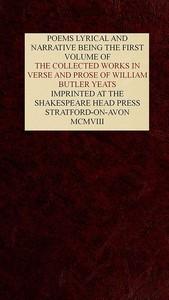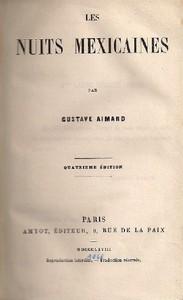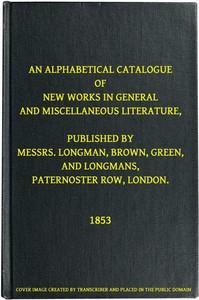Read this ebook for free! No credit card needed, absolutely nothing to pay.
Words: 4466 in 2 pages
This is an ebook sharing website. You can read the uploaded ebooks for free here. No credit cards needed, nothing to pay. If you want to own a digital copy of the ebook, or want to read offline with your favorite ebook-reader, then you can choose to buy and download the ebook.

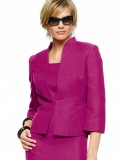
: The Collected Works in Verse and Prose of William Butler Yeats Vol. 4 (of 8) The Hour-glass. Cathleen ni Houlihan. The Golden Helmet. The Irish Dramatic Movement by Yeats W B William Butler - English literature Irish authors
Royal Institution of Great Britain.
EXTRA EVENING MEETING,
Monday, March 13, 1882.
H.R.H. THE PRINCE OF WALES, K.G. F.R.S. Vice-Patron and Honorary Member, in the Chair.
EADWEARD MUYBRIDGE, of San Francisco.
The problem of animal mechanism has engaged the attention of mankind during the entire period of the world's history.
While the philosopher was exhausting his endeavours to expound the laws that control, and the elements that effect the movements associated with animal life, the artist, with a few exceptions, seems to have been content with the observations of his earliest predecessors in design, and to have accepted as authentic without further inquiry, the pictorial and sculptural representations of moving animals bequeathed from the remote ages of tradition.
When the body of an animal is being carried forward with uniform motion, the limbs in their relations to it have alternately a progressive and a retrogressive action, their various portions accelerating in comparative speed and repose as they extend downwards to the feet, which are subjected to successive changes from a condition of absolute rest, to a varying increased velocity in comparison with that of the body.
The action of no single limb can be availed of for artistic purposes without a knowledge of the synchronous action of the other limbs; and to the extreme difficulty, almost impossibility, of the mind being capable of appreciating the simultaneous motion of the four limbs of an animal, even in the slower movements, may be attributed the innumerable errors into which investigators by observation have been betrayed. When these synchronous movements and the successive attitudes they occasion are understood, we at once see the simplicity of animal locomotion, in all its various types and alternations. The walk of a quadruped being its slowest progressive movement would seem to be a very simple action, easy of observation and presenting but little difficulty for analysis, yet it has occasioned interminable controversies among the closest and most experienced observers.
When, during a gallop, the fore and hind legs are severally and consecutively thrust forwards and backwards to their fullest extent, their comparative inaction may create in the mind of the careless observer an impression of indistinct outlines; these successive appearances were probably combined by the earliest sculptors and painters, and with grotesque exaggeration adopted as the solitary position to illustrate great speed. Or, as is very likely, excessive projection of limb was intended to symbolise speed, just as excess in size was an indication of rank. This opinion is to some extent corroborated by the productions of the Grecian artists in their best period, when their heroes are represented of the same size as other men, and their horses in attitudes more nearly resembling those possible for them to assume. The remarkable conventional attitude of the Egyptians, however, has, with few modifications, been used by artists of nearly every age to represent the action of galloping, and prevails without recognised correction in all civilised countries at the present day.
A few eminent artists, notable among whom is Meissonier, have endeavoured in depicting the slower movements of animals to invoke the aid of truth instead of imagination to direct their pencil, but with little encouragement from their critics; until recently, however, artists and critics alike have necessarily had to depend upon their observation alone to justify their conceptions or to support their theories.
Photography, at first regarded as a curiosity of science, was soon recognised as a most important factor in the search for truth, and its more popular use is now entirely subordinated by its value to the astronomer, the anatomist, the pathologist, and other investigators of the complex problems of nature. The artist, however, still hesitates to avail himself of the resources of what may be at least acknowledged as a handmaiden of art, if not admitted to its most exalted ranks.
Free books android app tbrJar TBR JAR Read Free books online gutenberg
More posts by @FreeBooks

: The Collected Works in Verse and Prose of William Butler Yeats Vol. 2 (of 8) The King's Threshold. On Baile's Strand. Deirdre. Shadowy Waters by Yeats W B William Butler - English literature Irish authors
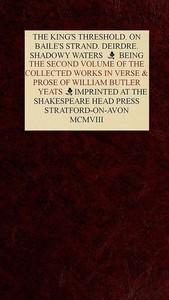

: The Collected Works in Verse and Prose of William Butler Yeats Vol. 1 (of 8) Poems Lyrical and Narrative by Yeats W B William Butler - English literature Irish authors
